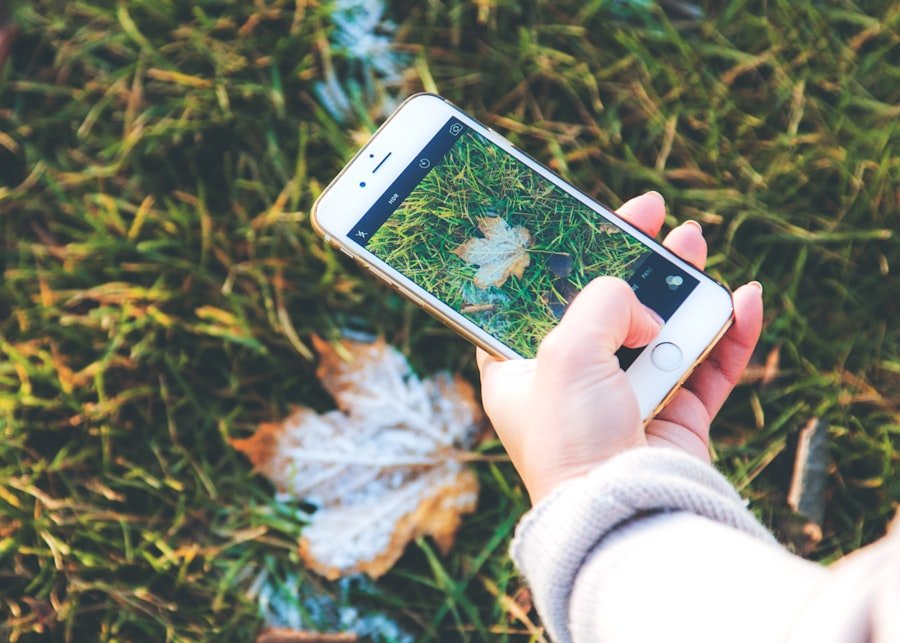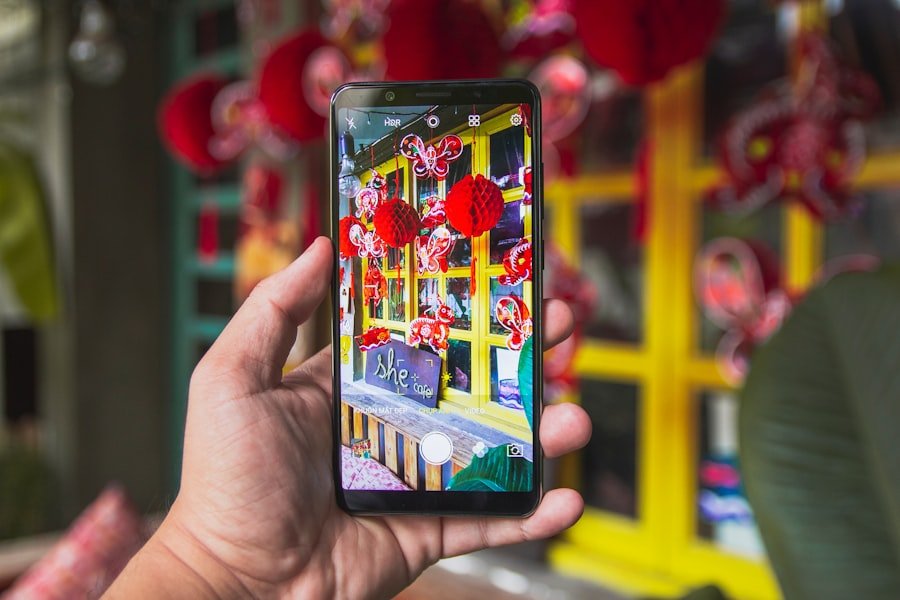The advent of smartphones has revolutionized the way we capture and share images, with the iPhone standing out as a particularly powerful tool for photography enthusiasts. At its core, iPhone photography is about understanding the capabilities of the device and leveraging them to create compelling images. The iPhone camera has evolved significantly over the years, boasting features such as multiple lenses, advanced sensors, and sophisticated software that enhance image quality.
Familiarizing oneself with these features is essential for anyone looking to elevate their photography skills. One of the fundamental aspects of iPhone photography is grasping the concept of exposure, which is determined by three key elements: aperture, shutter speed, and ISO. While the iPhone automates much of this process, understanding how these elements interact can help photographers make informed decisions when capturing images.
For instance, a wider aperture allows more light to enter the camera, which is particularly useful in low-light situations. Conversely, a faster shutter speed can freeze motion, making it ideal for action shots. By experimenting with these settings, users can gain a deeper appreciation for how they influence the final image.
Key Takeaways
- Understanding the basics of iPhone photography:
- Learn about the camera features and settings on your iPhone
- Understand the rule of thirds and how to use it in your compositions
- Utilizing natural light and composition:
- Make use of natural light for better photos
- Experiment with different angles and perspectives for interesting compositions
- Mastering the art of editing with iPhone photography apps:
- Explore various editing apps and their features
- Learn how to enhance your photos while maintaining a natural look
- Capturing stunning portraits with your iPhone:
- Use portrait mode and lighting techniques for professional-looking portraits
- Focus on capturing genuine emotions and expressions
- Exploring advanced techniques for long exposure and night photography:
- Experiment with long exposure to capture light trails and motion
- Use a tripod for stability and explore night photography settings on your iPhone
- Tips for sharing and showcasing your iPhone photography on social media:
- Use hashtags and geotags to increase visibility
- Engage with the photography community and seek feedback for improvement
Utilizing natural light and composition
The Golden Hour
The golden hour—shortly after sunrise and before sunset—provides soft, diffused light that enhances colors and reduces harsh shadows. Photographers should aim to shoot during these times to capture images that are both vibrant and visually appealing.
Composition Essentials
Composition is equally crucial in photography, as it dictates how elements within a frame interact with one another. The rule of thirds is a foundational principle that suggests dividing an image into nine equal parts using two horizontal and two vertical lines. Placing key subjects along these lines or at their intersections can create a more balanced and engaging composition. Additionally, leading lines—such as roads or pathways—can guide the viewer’s eye through the image, adding depth and interest.
Enhancing iPhone Photography
By combining an understanding of natural light with effective compositional techniques, photographers can significantly enhance their iPhone photography.
Mastering the art of editing with iPhone photography apps

Editing is an integral part of modern photography, allowing photographers to refine their images and bring their creative visions to life. The iPhone offers a plethora of editing apps that cater to various skill levels and preferences. Popular choices include Adobe Lightroom, Snapseed, and VSCO, each providing unique tools and features that can elevate an image from ordinary to extraordinary.
For instance, Lightroom offers advanced color grading options and precise control over exposure settings, while Snapseed provides intuitive filters and healing tools for quick adjustments. When editing photos on an iPhone, it’s essential to maintain a balance between enhancement and authenticity. Over-editing can lead to unnatural results that detract from the original image’s charm.
A subtle approach often yields the best results; adjusting brightness, contrast, and saturation can enhance an image without compromising its integrity.
Additionally, utilizing features like selective adjustments allows photographers to target specific areas of an image for enhancement, ensuring that the final product remains cohesive and visually appealing.Capturing stunning portraits with your iPhone
| Technique | Percentage |
|---|---|
| Use of natural light | 80% |
| Portrait mode | 70% |
| Composition | 65% |
| Editing apps | 60% |
| Facial expressions | 55% |
Portrait photography is a popular genre that allows photographers to capture the essence of their subjects. The iPhone’s portrait mode utilizes advanced algorithms to create a depth-of-field effect, blurring the background while keeping the subject in sharp focus. This feature mimics the look of professional cameras with larger sensors and lenses, making it accessible for everyday users.
To achieve stunning portraits, it’s essential to consider factors such as lighting, background, and subject positioning. Natural light is particularly effective for portrait photography; soft light can create flattering skin tones and reduce harsh shadows. Positioning subjects near windows or outdoors during golden hour can yield beautiful results.
Additionally, backgrounds play a crucial role in portrait composition; a cluttered or distracting background can detract from the subject’s presence. Opting for simple backgrounds or utilizing bokeh effects can help keep the focus on the subject while adding an artistic touch to the image.
Exploring advanced techniques for long exposure and night photography
Long exposure photography is a captivating technique that allows photographers to capture motion over time, resulting in ethereal images that convey a sense of movement. While traditionally requiring specialized equipment like tripods and DSLRs, iPhone users can achieve similar effects using apps designed for long exposure shots. Apps such as Slow Shutter Cam enable users to control shutter speed settings directly from their devices, allowing for creative experimentation with light trails or smooth water surfaces.
Night photography presents its own set of challenges but also offers unique opportunities for creativity. The iPhone’s Night mode automatically adjusts settings to optimize low-light performance, producing clearer images with reduced noise. However, for those looking to push their night photography further, manual control over exposure settings can be beneficial.
Techniques such as bracketing—taking multiple exposures at different settings—can help capture a wider dynamic range in challenging lighting conditions. By mastering these advanced techniques, photographers can unlock new dimensions in their iPhone photography.
Tips for sharing and showcasing your iPhone photography on social media

Curating a Cohesive Aesthetic
In today’s digital age, sharing photography on social media platforms has become an integral part of the creative process. Instagram, Facebook, and other platforms provide photographers with opportunities to showcase their work to a global audience. To make a lasting impression, it’s essential to curate a cohesive aesthetic that reflects personal style while engaging viewers. This can be achieved by maintaining consistency in editing styles, color palettes, and subject matter across posts.
Engagement and Community Building
Engagement is another critical aspect of sharing photography on social media. Interacting with followers through comments and direct messages fosters a sense of community and encourages others to engage with your work.
Increasing Visibility and Reach
Additionally, utilizing relevant hashtags can increase visibility and attract new followers who share similar interests in photography. Participating in photography challenges or collaborations with other creators can also expand reach and introduce fresh perspectives into one’s portfolio. By strategically sharing and showcasing their work online, photographers can build a robust presence in the digital landscape while inspiring others with their creativity.
If you’re looking to take professional photos with your iPhone, you may want to check out this article on AppsSoftwares that provides tips and tricks for capturing high-quality images with your smartphone. The article covers everything from composition and lighting to editing techniques that can help elevate your photography skills. It’s a great resource for anyone looking to improve their iPhone photography game.
FAQs
What are the benefits of taking professional photos with an iPhone?
Taking professional photos with an iPhone offers convenience, portability, and the ability to edit and share photos instantly using various apps and software.
What are some tips for taking professional photos with an iPhone?
Some tips for taking professional photos with an iPhone include using natural lighting, adjusting exposure and focus manually, using the rule of thirds for composition, and utilizing various photography apps for editing and enhancing the photos.
What accessories can enhance the quality of iPhone photos?
Accessories such as external lenses, tripods, and stabilizers can enhance the quality of iPhone photos by providing better control over focus, stability, and the ability to capture different perspectives.
What are some recommended photography apps for iPhone users?
Some recommended photography apps for iPhone users include Adobe Lightroom, VSCO, Snapseed, and ProCamera, which offer a wide range of editing tools and filters to enhance the quality of photos.
How can I improve my photography skills with an iPhone?
Improving photography skills with an iPhone can be achieved by practicing regularly, studying composition and lighting techniques, experimenting with different settings and apps, and seeking inspiration from professional photographers and online resources.
